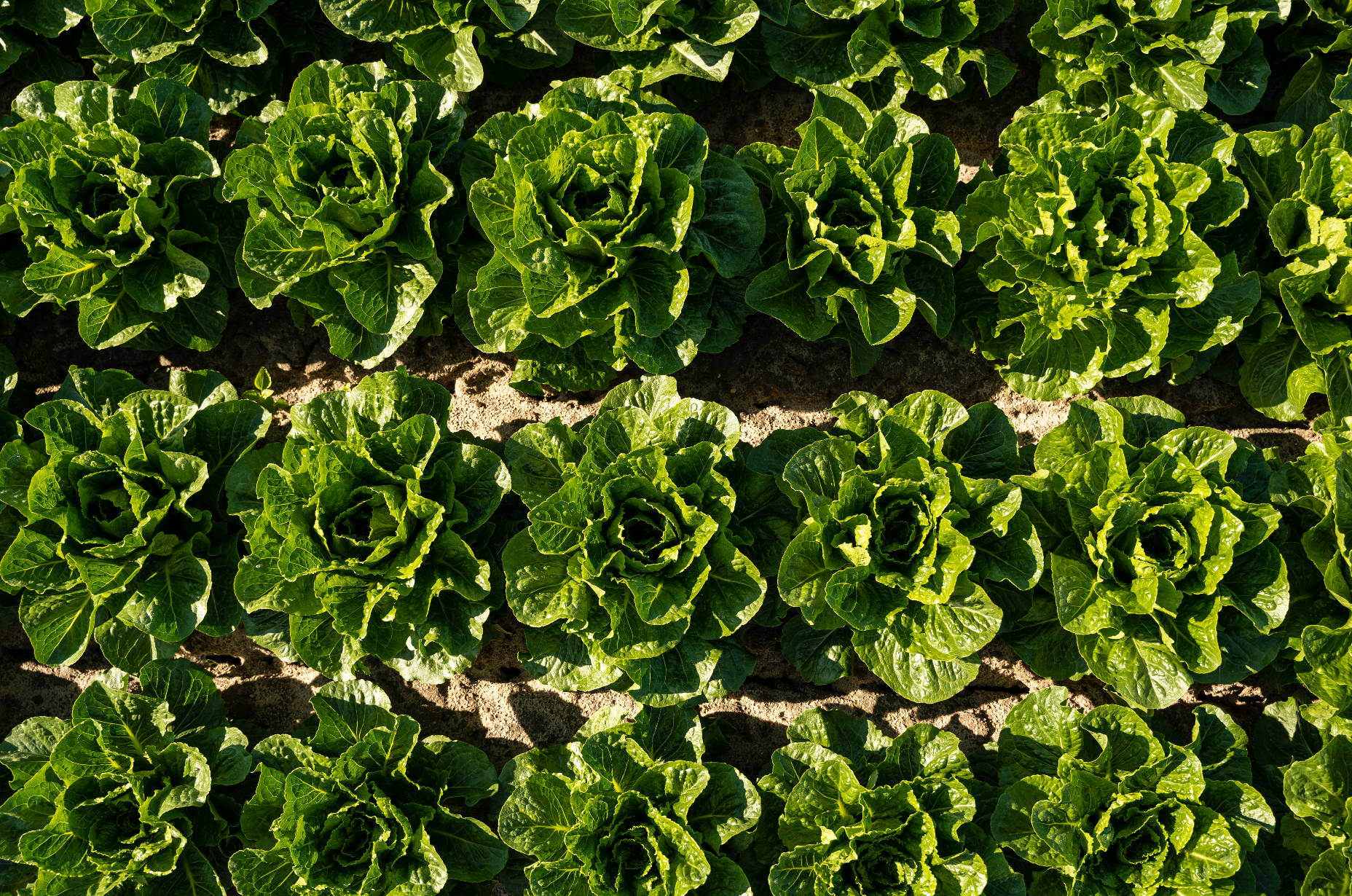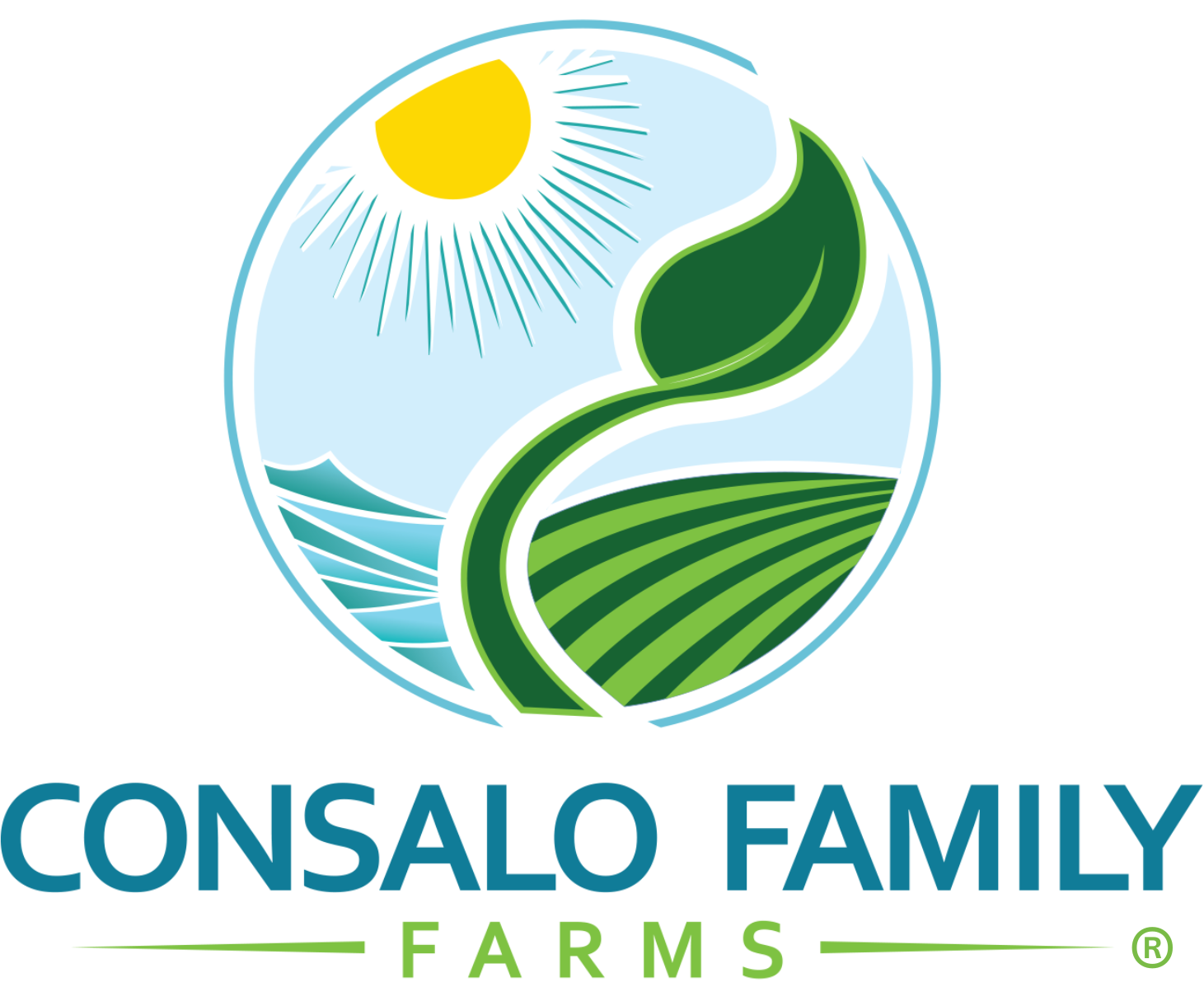
Lettuce
-

Iceberg
Iceberg lettuce is medium to large in size, averaging between 25-30 centimeters in diameter. Iceberg is spherical in shape, similar to cabbage. The firm head is tightly packed with broad, thick, and crisp leaves that are concentrated with a high-water content. The outer leaves are typically light green while the inner leaves range from pale yellow to a translucent white.
Known for its mild flavor and firm, crunchy texture, iceberg lettuce is great for salads, shredded in snacks, as a garnish and on sandwiches. Iceberg lettuce is a good source of potassium, iron, calcium, fiber, folate and vitamins A, C, and K.
Our Favorite Ways to use Iceberg — Classic Wedge Salad with Bleu Cheese Dressing, Bacon Bits, and Tomatoes & A classic BLT with Jersey Tomatoes, Crispy Bacon and Iceberg Lettuce
-

Romaine
Romaine is distinguished by its elongated head and long, narrow leaves. These leaves are dark green and have a coarse texture. Romaine leaves are quite firm and have distinctive ribs. Romaine lettuce is crisp in texture and has been traditionally called ‘cos’ lettuce.
Romaine is rich in nutrients such as vitamin A, vitamin K, folate, and molybdenum. It is a good source of dietary fiber. This lettuce has an extremely low calorie content and high water volume. Romaine is a ‘heart-healthy’ green and can prevent the oxidation of cholesterol.
Our Favorite Ways to use Romaine — Grilled Romaine Caesar Salad & Chicken Lettuce Wraps
-

Red Leaf
Red leaf lettuce has a consistently crispy texture with a mild and earthy flavor. It is generally the name for a lot of varieties that have a deep red, burgundy stain. Red leaf is a loose-leaf lettuce with red highlights, green colored outer leaves, and cream colored inner leaves.
Red leaf lettuce contains substantial levels of anthocyanin. This means that it contains health-boosting antioxidants. These include anti-inflammatory and anti-cancer properties.
Our Favorite Ways to use Red Leaf Lettuce — Red Leaf Salad with Radishes, Capers and Tomatoes & Red Leaf Salad with Roasted Carrots and Buttermilk Herb Dressing
-

Boston
Boston is a lettuce that is distinguished by a rounded head. The leaves are yellow-green, broad, and soft textured. They form a ‘rosette’ pattern and provide mild flavor. Boston lettuce is available year-round; peak season is summer through fall.
One hundred grams of Boston lettuce contains 1 gram of iron. Boston provides calcium, magnesium, phosphorus and potassium and is good source of vitamins A and K. This lettuce is very low in sodium and saturated fat.
Our Favorite Ways to use Boston Lettuce — Boston Lettuce Salad with Honey Mustard Vinaigrette, Boston Lettuce and Citrus Salad & Chicken Chopped Salad in Boston Lettuce Cups
-

Green Leaf
Green leaf lettuce has a mild flavor with slightly bitter undertones. It produces semi-frilled loose leaves with colors varying from lime green to cream. The inner leaves of green leaf are lighter in color. The texture is consistently crispy and succulent.
There are about 15 calories in one-half cup of green leaf lettuce. It is one of the best sources of vitamin K, and one hundred grams of green leaf lettuce has 10 percent of the recommended daily intake of vitamin C.
Our Favorite Ways to use Green Leaf Lettuce — Green Leaf Salad with Shallot Vinaigrette, Lemon Parmesan Green Leaf Salad & Cobb Salad with Green Leaf Lettuce
-

Escarole
Escarole is a flat-leafed lettuce that belongs to the chicory family. Its broad leaves have crumpled, slightly jagged edges that distinguish it from butterhead lettuce.
Escarole packs fiber and several nutrients, including copper, folate, and vitamins A, C, and K — all with very few calories and zero fat. Escarole’s many benefits include supporting gut and eye health. It may likewise reduce inflammation and promote proper blood clotting and bone health.
Our Favorite Ways to use Escarole — Italian Wedding Soup, Halibut over Wilted Escarole & Braised Escarole with Bleu Cheese and Apples
-

Endive
Endive is a member of the chicory family and known for its mild bitter flavor. As with other leafy greens, endive is one of the healthiest foods you can eat because it is loaded with fiber, vitamins, minerals, and phytonutrients to help protect your health. Some of the benefits of endive consumption include cancer prevention, heart health, good vision, weight loss & support for healthy pregnancies.
Our Favorite Ways to use Endive — Endive Salad with Orange and Walnuts, Endive Boats with Pear and Bleu Cheese & Maple Butter Roasted Endive
